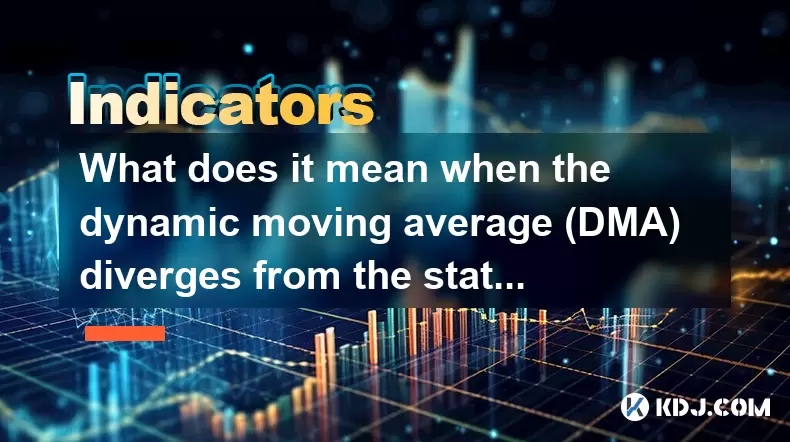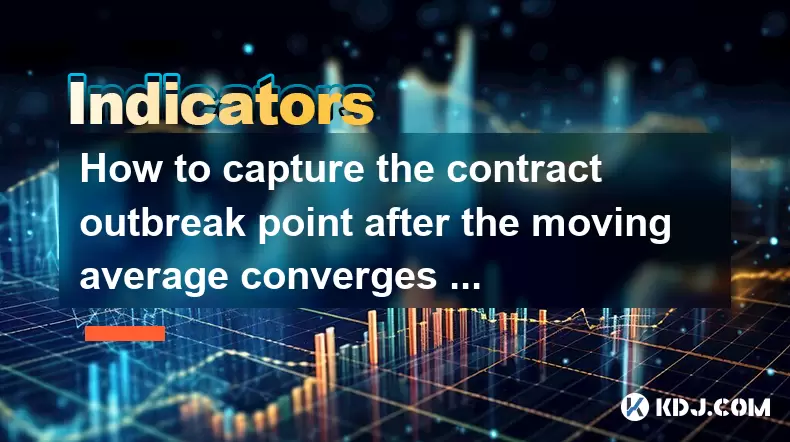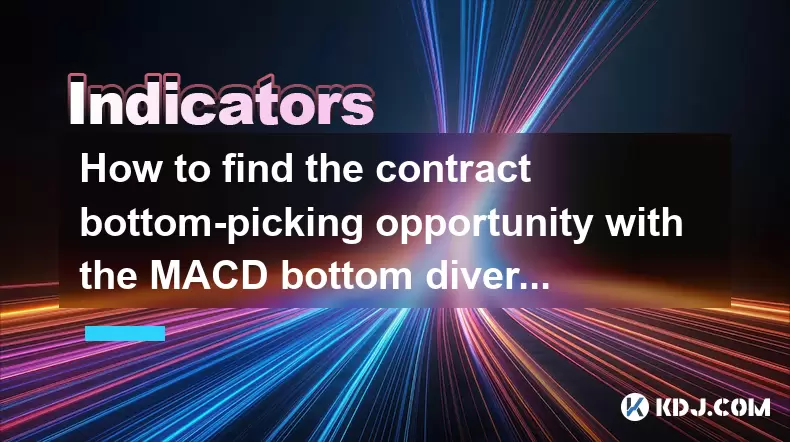-
 Bitcoin
Bitcoin $106,754.6083
1.33% -
 Ethereum
Ethereum $2,625.8249
3.80% -
 Tether USDt
Tether USDt $1.0001
-0.03% -
 XRP
XRP $2.1891
1.67% -
 BNB
BNB $654.5220
0.66% -
 Solana
Solana $156.9428
7.28% -
 USDC
USDC $0.9998
0.00% -
 Dogecoin
Dogecoin $0.1780
1.14% -
 TRON
TRON $0.2706
-0.16% -
 Cardano
Cardano $0.6470
2.77% -
 Hyperliquid
Hyperliquid $44.6467
10.24% -
 Sui
Sui $3.1128
3.86% -
 Bitcoin Cash
Bitcoin Cash $455.7646
3.00% -
 Chainlink
Chainlink $13.6858
4.08% -
 UNUS SED LEO
UNUS SED LEO $9.2682
0.21% -
 Avalanche
Avalanche $19.7433
3.79% -
 Stellar
Stellar $0.2616
1.64% -
 Toncoin
Toncoin $3.0222
2.19% -
 Shiba Inu
Shiba Inu $0.0...01220
1.49% -
 Hedera
Hedera $0.1580
2.75% -
 Litecoin
Litecoin $87.4964
2.29% -
 Polkadot
Polkadot $3.8958
3.05% -
 Ethena USDe
Ethena USDe $1.0000
-0.04% -
 Monero
Monero $317.2263
0.26% -
 Bitget Token
Bitget Token $4.5985
1.68% -
 Dai
Dai $0.9999
0.00% -
 Pepe
Pepe $0.0...01140
2.44% -
 Uniswap
Uniswap $7.6065
5.29% -
 Pi
Pi $0.6042
-2.00% -
 Aave
Aave $289.6343
6.02%
What does it mean when the dynamic moving average (DMA) diverges from the static moving average?
Divergence between Dynamic and Static Moving Averages can signal trend changes, volatility shifts, or weakening momentum in crypto markets.
Jun 17, 2025 at 05:56 am

Understanding the Dynamic and Static Moving Averages
In the realm of cryptocurrency trading, technical analysis plays a crucial role in helping traders make informed decisions. Two key indicators used are the Dynamic Moving Average (DMA) and the Static Moving Average (SMA or EMA). The static moving average, such as the Simple Moving Average (SMA) or Exponential Moving Average (EMA), calculates the average price over a fixed period, offering a smoothed-out view of price action. On the other hand, the dynamic moving average adjusts its calculation based on volatility or other dynamic inputs, making it more responsive to recent price changes.
When these two averages diverge, it can signal potential shifts in market dynamics. This divergence is not just a visual anomaly but an indicator that market conditions might be changing—possibly hinting at trend reversals, increased volatility, or weakening momentum.
What Causes Divergence Between DMA and SMA?
Divergence between the DMA and static moving average typically occurs due to changes in market volatility or price momentum. Since the DMA adapts to current market conditions, it reacts more swiftly than a standard moving average like the 20-day SMA. If the DMA pulls away from the SMA, especially in a rising or falling direction, it suggests that price is accelerating and may be deviating from its historical average behavior.
This divergence becomes particularly significant during periods of high volatility, which are common in crypto markets. For example, during a sudden surge in Bitcoin's price, the DMA may rise sharply while the SMA lags behind, creating a visible gap. This gap reflects the increased responsiveness of the DMA to new information and price shocks.
How to Identify Divergence Visually on a Chart
To spot this divergence on your charting platform:
- Apply both the DMA and a standard moving average (like the 50-period SMA) on the same chart.
- Observe how the two lines interact:
- When the DMA line begins to move away from the SMA, either upwards or downwards, divergence starts forming.
- Look for crossovers where the DMA crosses above or below the SMA, followed by sustained separation.
- Use zoom controls to ensure you're not misreading short-term noise as actual divergence.
Many platforms allow customization of the DMA settings, so you can adjust sensitivity. For instance, increasing the volatility multiplier in some DMA models will make it react more aggressively to price swings.
Implications of Divergence in Crypto Trading
The divergence between DMA and SMA has practical implications for traders:
- Early trend detection: When the DMA pulls away from the SMA, it can act as an early warning sign of a developing trend. Traders often use this as a signal to enter trades before the broader market recognizes the shift.
- Volatility confirmation: In highly volatile assets like altcoins, a widening gap confirms that price action is intensifying, possibly due to news, macroeconomic events, or whale movements.
- Momentum decay: Conversely, if the DMA converges back toward the SMA, it could indicate that the momentum is fading, and the current trend might be losing steam.
For swing traders or scalpers, recognizing this divergence helps in timing entries and exits with greater precision, especially when combined with volume and order book data.
How to Trade Using DMA-SMA Divergence
If you want to trade based on this divergence, here’s a step-by-step approach:
- Select a cryptocurrency pair with sufficient liquidity, such as BTC/USDT or ETH/USDT.
- Add both the DMA and SMA indicators to your chart. Common setups include using a 20-period SMA alongside a DMA set with default volatility sensitivity.
- Wait for the DMA to diverge significantly from the SMA. This can occur after a consolidation phase or during a breakout.
- Confirm divergence with additional tools:
- Check if volume spikes accompany the divergence.
- Ensure that RSI or MACD also shows signs of momentum buildup.
- Place a trade once the candle closes beyond the previous resistance/support level confirmed by the divergence.
- Set stop-loss orders just beyond the recent swing low/high to manage risk effectively.
Remember, no single indicator should be used in isolation. Combining the DMA-SMA divergence with other confirming signals improves reliability.
Common Misinterpretations of DMA-SMA Divergence
Traders often misread divergence signals due to several reasons:
- Confusing short-term wiggles with actual divergence: Not every minor separation indicates a meaningful change in trend.
- Ignoring context: Divergence appearing during sideways markets may not carry the same weight as during strong trending moves.
- Failing to adjust timeframes: What looks like a divergence on a 1-hour chart may not hold up on a daily chart.
- Over-reliance on one indicator: Relying solely on DMA-SMA divergence without checking volume or order flow can lead to false signals.
It’s important to treat divergence as a confirmation tool rather than a trigger for action. Always cross-check with other aspects of your strategy.
Frequently Asked Questions
Q: Can DMA-SMA divergence be applied to all cryptocurrencies?
Yes, this concept applies broadly across crypto assets. However, its effectiveness can vary depending on the liquidity and volatility of the specific coin or token. High-volume pairs like BTC and ETH tend to provide clearer signals compared to lower-cap altcoins.
Q: Is DMA-SMA divergence reliable in ranging markets?
In sideways or consolidating markets, divergence may appear frequently but lacks predictive power. It tends to perform better in trending environments where momentum builds consistently in one direction.
Q: How do I choose the right DMA settings for my trading style?
Short-term traders may prefer higher sensitivity settings to catch quick moves, while long-term traders might opt for smoother settings to filter out noise. Experiment with different configurations on historical charts to find what aligns best with your strategy.
Q: Should I use DMA-SMA divergence alone or with other indicators?
It’s generally advised to use this divergence alongside other tools such as volume, RSI, or MACD. Using multiple confirming signals enhances accuracy and reduces the likelihood of acting on false breakouts or whipsaws.
Disclaimer:info@kdj.com
The information provided is not trading advice. kdj.com does not assume any responsibility for any investments made based on the information provided in this article. Cryptocurrencies are highly volatile and it is highly recommended that you invest with caution after thorough research!
If you believe that the content used on this website infringes your copyright, please contact us immediately (info@kdj.com) and we will delete it promptly.
- Cumbria Cricket Club Secures Thrilling Double Victory Over Shropshire
- 2025-06-19 13:25:12
- Coinbase Stock: Riding the Crypto Wave with Room to Run?
- 2025-06-19 13:25:12
- XRP Price Prediction: June 19th - Will It Break the Sideways Trend?
- 2025-06-19 13:30:12
- Crypto-Native Asset Managers: Onchain Holdings Surge as DeFi Becomes the Invisible Back-End
- 2025-06-19 14:04:15
- Altcoins Bucking the Trend: A Crypto Comeback?
- 2025-06-19 14:12:04
- Solana ETF Watch: DTCC Listing Sparks SEC Approval Buzz!
- 2025-06-19 13:30:12
Related knowledge

How does the long lower shadow of the K line indicate the formation of the bottom of the contract?
Jun 19,2025 at 05:00am
Understanding the Long Lower Shadow in K-Line AnalysisIn cryptocurrency trading, K-line analysis plays a pivotal role in determining market sentiment and potential price reversals. A long lower shadow, also known as a long wick, is one of the most telling candlestick patterns that traders look for when assessing whether a bottom might be forming in a co...

How to capture the contract outbreak point after the moving average converges and diverges?
Jun 19,2025 at 02:07pm
Understanding Moving Average Convergence and Divergence in Crypto TradingIn cryptocurrency trading, moving averages are among the most widely used technical indicators. The concept of convergence and divergence refers to how different moving averages align or separate over time. When short-term and long-term moving averages come together (converge), it ...

How to find the contract bottom-picking opportunity with the MACD bottom divergence?
Jun 19,2025 at 02:28pm
Understanding MACD Bottom Divergence in Cryptocurrency TradingMACD (Moving Average Convergence Divergence) is a widely used technical analysis tool that helps traders identify potential reversals in price trends. Bottom divergence, specifically, occurs when the price of an asset makes a new low, but the MACD indicator does not confirm this by making a c...

How to use the DEMARK indicator to predict the high and low points of the contract?
Jun 19,2025 at 04:21am
What Is the DEMARK Indicator?The DEMARK indicator is a technical analysis tool developed by Tom DeMark, aimed at identifying price exhaustion points in financial markets. It helps traders anticipate potential reversal zones, especially in volatile environments such as cryptocurrency contracts. The indicator works by detecting specific patterns and seque...

Why does the contract sometimes not fall after the moving average crosses?
Jun 18,2025 at 08:50pm
Understanding Moving Averages in Cryptocurrency TradingIn the realm of cryptocurrency trading, moving averages are among the most widely used technical indicators. They help traders identify potential trends by smoothing out price data over a specified period. The two primary types are the Simple Moving Average (SMA) and the Exponential Moving Average (...

How to predict the acceleration of contract market by the change of moving average slope?
Jun 18,2025 at 05:43pm
Understanding the Moving Average in Cryptocurrency TradingIn cryptocurrency trading, moving average (MA) is a fundamental technical indicator used to analyze price trends. It smooths out price data over a specific period, helping traders identify potential trend directions and momentum shifts. The slope of a moving average line reflects how quickly pric...

How does the long lower shadow of the K line indicate the formation of the bottom of the contract?
Jun 19,2025 at 05:00am
Understanding the Long Lower Shadow in K-Line AnalysisIn cryptocurrency trading, K-line analysis plays a pivotal role in determining market sentiment and potential price reversals. A long lower shadow, also known as a long wick, is one of the most telling candlestick patterns that traders look for when assessing whether a bottom might be forming in a co...

How to capture the contract outbreak point after the moving average converges and diverges?
Jun 19,2025 at 02:07pm
Understanding Moving Average Convergence and Divergence in Crypto TradingIn cryptocurrency trading, moving averages are among the most widely used technical indicators. The concept of convergence and divergence refers to how different moving averages align or separate over time. When short-term and long-term moving averages come together (converge), it ...

How to find the contract bottom-picking opportunity with the MACD bottom divergence?
Jun 19,2025 at 02:28pm
Understanding MACD Bottom Divergence in Cryptocurrency TradingMACD (Moving Average Convergence Divergence) is a widely used technical analysis tool that helps traders identify potential reversals in price trends. Bottom divergence, specifically, occurs when the price of an asset makes a new low, but the MACD indicator does not confirm this by making a c...

How to use the DEMARK indicator to predict the high and low points of the contract?
Jun 19,2025 at 04:21am
What Is the DEMARK Indicator?The DEMARK indicator is a technical analysis tool developed by Tom DeMark, aimed at identifying price exhaustion points in financial markets. It helps traders anticipate potential reversal zones, especially in volatile environments such as cryptocurrency contracts. The indicator works by detecting specific patterns and seque...

Why does the contract sometimes not fall after the moving average crosses?
Jun 18,2025 at 08:50pm
Understanding Moving Averages in Cryptocurrency TradingIn the realm of cryptocurrency trading, moving averages are among the most widely used technical indicators. They help traders identify potential trends by smoothing out price data over a specified period. The two primary types are the Simple Moving Average (SMA) and the Exponential Moving Average (...

How to predict the acceleration of contract market by the change of moving average slope?
Jun 18,2025 at 05:43pm
Understanding the Moving Average in Cryptocurrency TradingIn cryptocurrency trading, moving average (MA) is a fundamental technical indicator used to analyze price trends. It smooths out price data over a specific period, helping traders identify potential trend directions and momentum shifts. The slope of a moving average line reflects how quickly pric...
See all articles

























































































